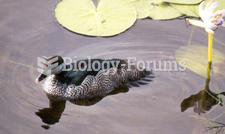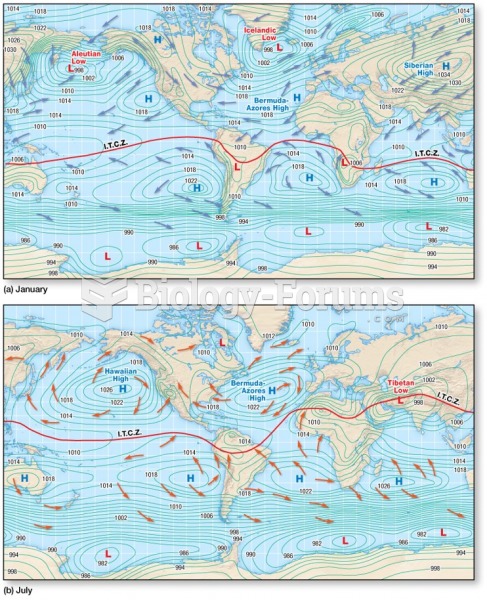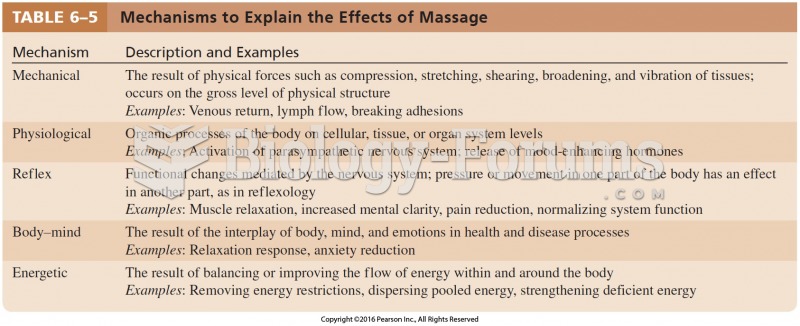Answer to Question 1
ANSWER: In the North Atlantic, there is the Greenland-Icelandic low, or simply Icelandic low, which covers Iceland and southern Greenland, while the Aleutian low sits over the Gulf of Alaska and Bering Sea near the Aleutian Islands in the North Pacific. These zones of cyclonic activity represent regions where numerous storms, having traveled eastward, tend to converge, especially in winter. In the Southern Hemisphere, where there is very little land to disrupt the flow, the subpolar low forms a continuous trough that completely encircles the globe. Hence, the reason for semipermanent lows in the Southern Hemisphere being weaker than in the Northern Hemisphere is that the Southern Hemisphere is mostly covered in water.
Answer to Question 2
ANSWER: Along the west coast of South America, where the cool Peru Current sweeps northward, southerly winds promote upwelling of cold, nutrient-rich water that gives rise to large fish populations. However, every two to five years or so, a warm current of nutrient-poor tropical water moves southward, replacing the cold, nutrient-rich surface water. Because this condition frequently occurs around Christmas, local fishermen labeled this warm current Corrieste del Nino more than a century ago. Translated, this is current of the Christ Child. Hence, the warm current's familiar nameEl Nino.
The large areas of abnormally warm water associated with El Nino and abnormally cold water associated with La Nina can have effects far beyond South America. During El Nino, the usual region of warm water in the western tropical Pacific is moved thousands of kilometers to the east. There, the water fuels the atmosphere with additional warmth and moisture, which feeds into storminess and rainfall. Along with the added warmth from the oceans, latent heat is released during condensation. All of these factors help change the regional atmospheric circulation. These effects can propagate for thousands of miles, rearranging the locations where rising and sinking motions tend to predominate. As a result, some regions of the world experience too much rainfall during El Nino, whereas others have too little. For example, there is a tendency during El Nino events for monsoon conditions over India to weaken. Drought is typically felt in Indonesia, southern Africa, and Australia, while heavy rains and flooding often occur in Ecuador and Peru. In the Northern Hemisphere, a strong subtropical westerly jet stream often directs midlatitude cyclonic storms into California and heavy rain into the Gulf Coast states. The total global impact of a major El Nino event due to flooding, winds, and drought may exceed many billions of dollars.







